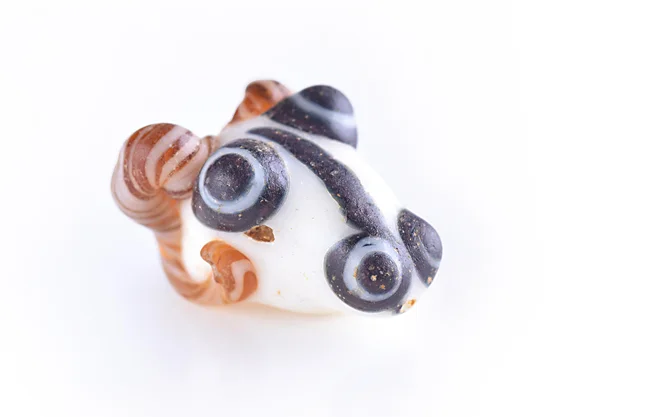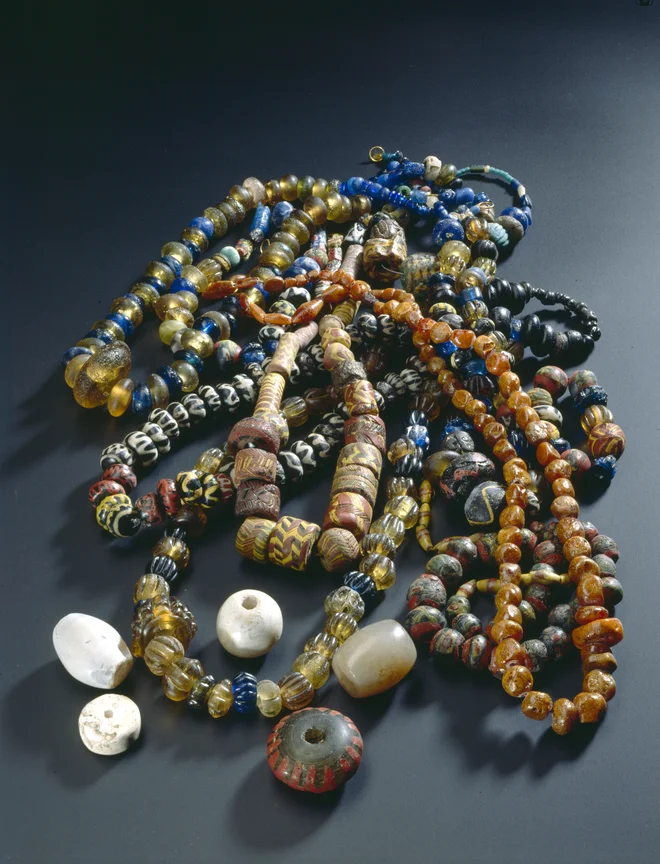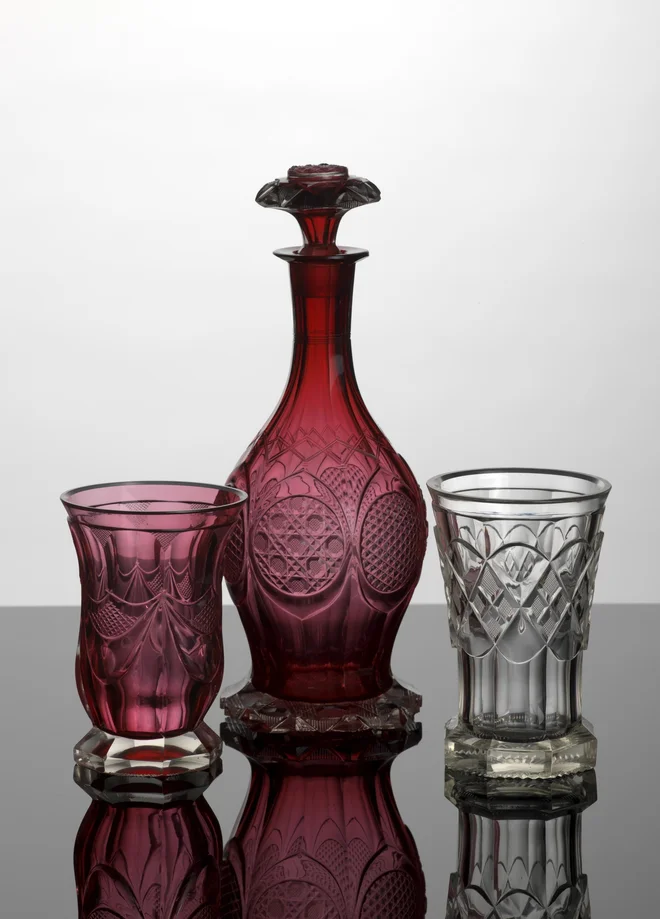Glass berries from ancient times

In Novo mesto, where they are known for artificially made colorful glass berries from the older Iron Age, they expose glass by the end of January 2026. In collaboration with several domestic and foreign institutions, as part of the project experience of glass from different angles, they represent rich and outstanding glass products from prehistoric times to the new century.
« With this project, we present incredible wealth, from the exceptional archeological and historical material of Slovenian and Croatian museums to the latest research on the creation of glass products over different periods and the review of contemporary creators in the wider European space, » explains Petra Stipančić, curator of the Dolenjska Museum on the project of the Student project, which will take place for a little less than a year.
Among the most special and exceptional glass berries are berries in the form of an ram of head. Novo mesto, Kapiteljska field, grave VII/28. It is kept by the Dolenjska Museum. Photo Borut Cross
Initially, experts from Slovenia, Europe and America gathered in Novo mesto, who are at a two -day conference Glass ties between tradition and innovation They treat glass as raw material, glass products over time, presented interdisciplinary research and glass protection processes.
They also opened an archeological exhibition Glass worldswhich was created in cooperation with museums from Slovenia, Croatia and Austria and will be on display at the Dolenjska Museum Gallery until mid -January next year. The central exhibition of the project Experience is dedicated to reviewing glass products from the beginnings in the late Bronze Age, that is, in the 9th century BC, until the new century. « Material from our archeological collection is complemented by exceptional pieces from collections of Slovenian, Croatian and Austrian museums, » says the interviewee.
Flowering Dolenjska Halstat

Junting and glass berries necklaces. Kranj, Lajh. It is kept by the Gorenjska Museum. Photo Tomaž Lauko
The centerpiece of the exhibition is dedicated to artificially made multicolored glass berries of necklaces that testify to the flowering Dolenjska Hallstat. The first glass items were made by the Sumerians in the middle of 3. A millennium BC. « The oldest glass berries in the territory of Slovenia are dating into the middle and beginning of the Late Bronze Age, ie in the second half of the 16th and the first half of the 15th century to the 12th century BC, » explains the curator.
Glass berries came from Frattesin workshops in northern Italy and from workshops in the Mediterranean and Mesopotamia. They are of different sizes, with a hole in the middle, mostly dark blue with white and yellow eyes or are monochrome blue or even yellow.
The change is brought about by an older Iron Age or Hallstatt culture, which is placed between 8th and 4th centuries BC. « This is a time of exceptional progress and intense trade of the southeastern Alpine space with the world of Western, Danube and Mediterranean cultures, » says the interviewee. One of the six older iron communities in Slovenia is Dolenjska, where archaeologists in women’s graves – this time is characterized by skeletal burial under the earth’s pile – found thousands of glass berries of vibrant colors: « Glass berries are also found in graves and settlements of other iron groups in Slovenia, but in unaffected quantities. »
Glass analyzes from the Dolenjska sites showed that it was a natron glass, that is, a glass with the added sodium compound, which was collected in Egypt and Mesopotamia, which lowers the melting point. It is about 800 years BC. Probably the berries were worked at home, and the raw material was imported, the curator explains: « Unfortunately, we have no evidence of glass stoves in the iron settlements of Dolenjska. »
The first glass containers

Glass beaker on the leg with a partial decoration of different colors. LJUBLJANA – Emona, grave 1038. Keeps the City Museum of Ljubljana. Photo Andrej Peunik
In the older Iron Age, in addition to colorful glass berries, the first glass containers also appear, including the oldest monochrome containers from the bridge on the Soča River from the turn of the 7th and 6th centuries BC, an extremely rare instance of imports from the eastern Mediterranean. The greatest valuables from this era are glass berries that have been applied to an organic string, but it has not been preserved. They are of different shapes, round, barrel, multifaceted, disc, amorphous, with colors dominated by blue in all shades, milky white, yellow, turquoise green and black. They are decorated with glass ornaments, nipples, rings, waves and eyeballs, which are also colorful colors. « There is something special about glass berries in the form of an ram head, whose original area is supposed to be right in Dolenjska, » explains the curator about products that show great skills and knowledge of glass masters.
Later, in the younger Iron Age or the Laten period, that is, between 3 and 1, a century BC, it changes at the grave ritual of Dolenjska, and the deceased begins to burn together with personal accessories. Multicolored glass bracelets and glass rings appear, but the glass products are much less, they are also of inferior quality, and the glass items are deformed due to incineration.
Everyday use

Decolorated glass bottle. The wall depicts the landscape with the sea and on the coast of a sitting figure, dominated by the lighthouse in Alexandria in the background. Ptuj-Petoviona, grave 11/1982. It keeps the Ptuj-Ormož Regional Museum. Photo Tomaž Lauko
A step forward in the design and use of glass brings a Roman period when glass crafts are progressing, so that the masters make many new forms of glass objects, which also become generally useful in everyday life. The closest to the larger trade center was Aquileia, where products from northern Italian workshops and other centers in central Italy were collected, as well as from workshops in the eastern Mediterranean and Egypt.
« Roman sites in Dolenjska reflect the use of glass in Roman everyday life, » writes archaeologist Dr. Irena Lazar in the catalog to the exhibition Glass worlds. Ever since the 3rd century, the glass masters made glass items with molds, among which stands out containers with multicolored and colorful patterns that were created by mosaic technique. « Multicolored tiles or glass strips consisted, twisted and folded, heated and stretched to reduce the patterns, » explains Irena Lazar. They were then sliced into thin tiles, and they were assembled into flat disks, from which they then formed containers, which were intended only for the most difficult due to demanding and time consuming.
In addition to the artificial products – we found a well -preserved container in the burial ground in Polhov Gradec and Emona, and in Dolenjska, especially in the settlement in Romula – the early Roman period brought monochrome glass vessels of intense colors – most often dark green, dark blue, red and turquoise or so painted. Julian-Hlavdian era.
Discovering glass blowing

Auersperg’s brushed rubber glass. It is kept by the National Museum of Slovenia. Photo Tomaž Lauko
During the Roman Empire, one of the biggest breakthroughs in the development of glassmaking also occurred: glass was discovered. « The new technique has simplified production and cheap the products, » says Irena Lazar. The free blowing technique prevailed in the 1st century and allowed the production of greater amounts of equal products for a lower, almost all affordable price. The evidence of window blowing is also oil – they were found three, and the best preserved from Slovenia, from the burial ground of the junction at the Lower Dioceses – on which the stove is depicted, two people next to it and one blows glass.
« Glass masters have developed a generation or two after discovering glass blowing, » writes Irena Lazar. The highlight was in the 1st century, when they started production of different product groups with the help of a mold. But the glass container used daily was not decorated, although the masters developed other decoration techniques such as painting, cutting and grinding. However, the collapse of the Roman empire meant the decline of glass crafts.
Much more about this fragile, some periods of prestigious material, which changes from prehistoric times to the new century in everyday and top -level artistic products, can be found at the Dolenjska Museum, where they also invite you to an exhibition An idea trapped in glasswhich features contemporary art glass from the collections of the Museum of Antique Glass Zadar and the Bärnbach Glass Museum.








